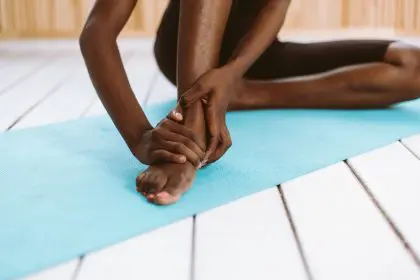You don’t need months of soul-searching or expensive life coaches to discover your purpose. While finding your calling might seem like a lifelong journey, there’s a focused exercise that can cut through the confusion and reveal your true direction in just 30 minutes.
This method works because it bypasses overthinking and connects you directly with your authentic desires and natural strengths.
The 30-minute purpose framework
Set aside 30 uninterrupted minutes and grab a pen and paper. Turn off your phone and find a quiet space where you can think clearly. This exercise works best when you’re not distracted by external noise or internal chatter about your daily responsibilities.
The key is approaching this with complete honesty and openness. Don’t worry about whether your answers seem practical or realistic — just focus on what feels true for you right now.
Step 1: The joy audit (10 minutes)
Write down everything that brings you genuine joy and energy. Not what you think should make you happy, but what actually does. Include activities, topics, types of people, environments, and experiences that light you up.
Think beyond just hobbies. Consider moments when you lose track of time, conversations that energize you, problems you enjoy solving, and situations where you feel most alive and authentic.
Include childhood interests that still resonate with you. Often, our earliest passions contain clues about our deeper purpose that we’ve dismissed as impractical.
Step 2: The strength inventory (10 minutes)
List your natural talents and skills — things that come easily to you that others find difficult. Include both hard skills and soft skills, as well as personality traits that serve you well.
Ask yourself: What do people consistently come to you for help with? What compliments do you receive most often? What tasks feel effortless to you but challenging to others?
Don’t be modest here. Your purpose often lies at the intersection of what you’re naturally good at and what the world needs.
Step 3: The impact vision (10 minutes)
Write about the change you want to see in the world. What problems make you angry or sad? What would you fix if you had unlimited resources? How do you want to be remembered?
Think about the people you admire most and what they represent. Consider the legacy you want to leave and the impact you want to have on others, whether that’s your family, community, or the world at large.
Your purpose doesn’t have to be grandiose. Sometimes the most meaningful purposes involve making a difference in individual lives rather than changing the entire world.
Finding the intersection
Look for patterns where your three lists overlap. Your purpose typically exists at the intersection of what you love, what you’re good at, and what the world needs from you.
Circle items that appear across multiple lists or that seem to connect thematically. These connections often point toward your core purpose, even if the specific career or life path isn’t immediately obvious.
The clarity questions
Ask yourself these focused questions to refine your understanding: If money weren’t a factor, how would you spend your time? What would you do even if no one paid you for it? What activities make you feel most like yourself?
When you imagine yourself at 80 years old, what do you hope you’ll have accomplished? What kind of person do you want to have become?
Moving from insight to action
Once you’ve identified potential purpose directions, choose one that feels most compelling and take one small action toward it within the next 24 hours. This could be researching careers, reaching out to someone in that field, or starting a small project.
Purpose becomes clear through action, not just thinking. The 30-minute exercise gives you direction, but clarity comes from experimenting with that direction in real life.
When the answer isn’t obvious
If you don’t have a clear answer after 30 minutes, that’s normal. Sometimes the exercise reveals that your purpose is to explore and experiment rather than to commit to a specific path immediately.
Consider that your purpose might be evolving or that you’re in a transition period. The exercise still provides valuable insights about your values and interests that can guide your next steps.
Taking it seriously
The simplicity of this exercise doesn’t diminish its power. Often, we overcomplicate purpose-finding because we think something so important must be difficult to discover. In reality, your purpose is usually something you already know deep down but haven’t given yourself permission to pursue.
Trust the insights that emerge from this exercise, even if they surprise you or seem to contradict your current life path.
You can find your life purpose in 30 minutes by honestly examining what brings you joy, what you’re naturally good at, and what impact you want to have. The intersection of these three areas reveals your authentic direction, giving you clarity to start living more purposefully immediately.


















